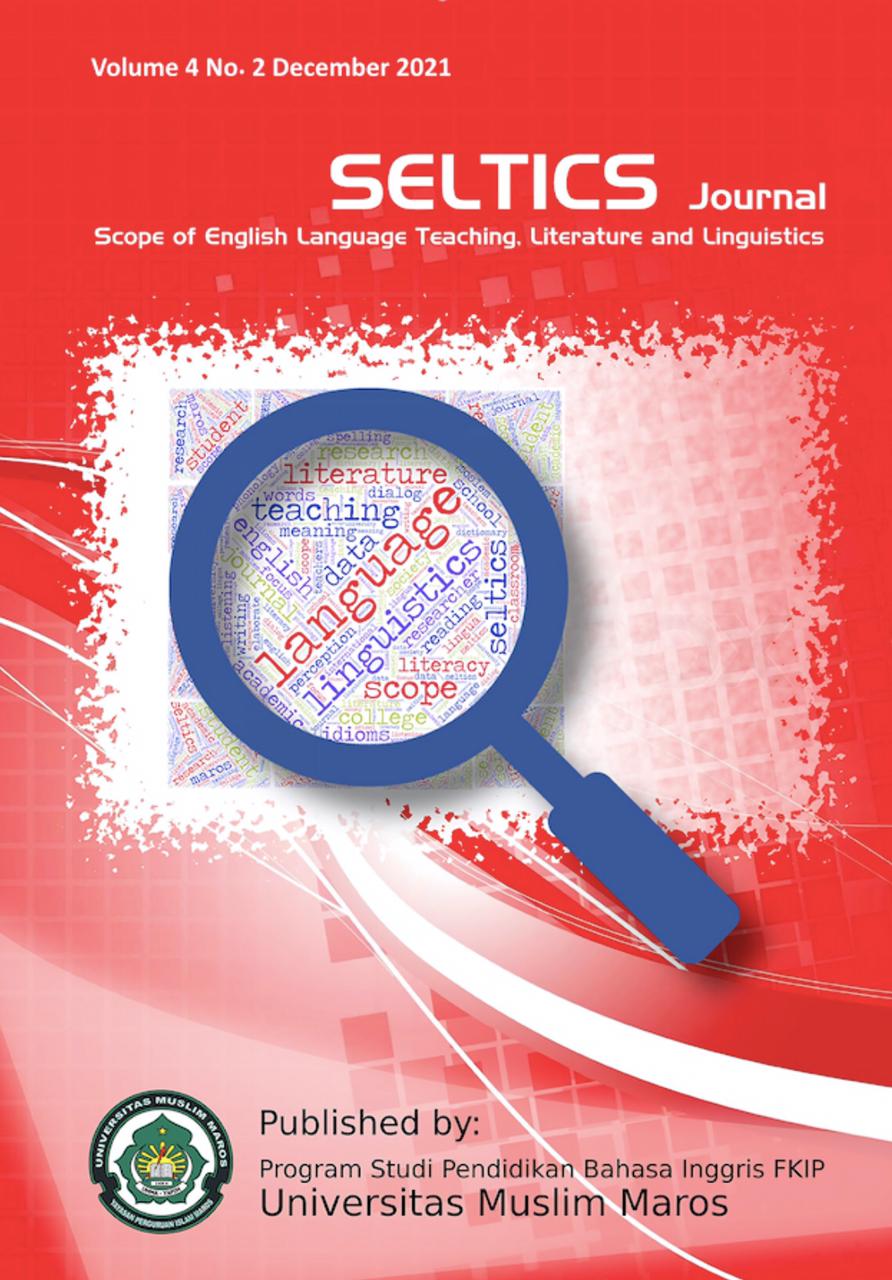The Implementation of Teachers’ Humor in The Classroom
DOI:
https://doi.org/10.46918/seltics.v4i2.1017Keywords:
Teachers’ Humor, Students’ Enthusiasm, Humor’s FunctionsAbstract
This research aims to investigate what types of teachers’ humor in teaching English, find out the function of teachers’ humor, and analyze the effect of teachers’ humor on students’ enthusiasm in learning English. This research applied a qualitative research design. The subjects of this research were English teachers of the English Language Center (ELC). In collecting the data, this research took place in the classroom for six meetings during the classroom interactions, particularly in 90 minutes of English lesson for each teacher. The data of the study were obtained by observing the learning and teaching activity in the classroom and interviewing the teachers and some students to know more about their perception of the learning process. The data were analyzed to identify the data from the observation, recorder, and interview. The result showed that the teacher used seven types of humor during the teaching and learning process: joke, pun, funny story, humorous comment, physical humor, satire, and riddle. In this research, the researcher found that the teachers used humor for three functions: coping with stress, drawing students’ attention, and facilitating communication. And there were five effects of teachers’ humor related to students’ enthusiasm in the classroom; the first one, telling humor could reduce boredom in learning in the classroom; the second, humor could break the stuck condition in the classroom; the third, students were feeling enthusiastic in learning when a teacher told humor in explaining the material; the fourth, students could easy to understand the lesson; and the last one, humor could maintain a social relationship.
Keywords: Teachers’ Humor, Students’ Enthusiasm, Humor’s Functions.
References
Baldwin, E. 2007. Humor Perception: The Contribution of Cognitive Factors. Psychology Dissertation.
Boerman, C. W. 2000. "Humour Your Students". Education Digest. 65(5), 56-62.
Cook & Guy. 2000. Language Play, Language Learning Oxford: Oxford University press Corduas, Marcella, Allyson Eggleston, and Salvatore Attardo Forthe.
Darmansyah, S.T. 2010. Strategi Pembelajaran Menyenangkan Dengan Humor. PT Bumi Aksara. http://m.kompasiana.com/post/read/543116/1/belajar-mengajar-butuh-humor-bukan-horor-.html
Erikson. 1979. Personality Theory, 137-169. Kanisius, Yogyakarta
Fogelson, S. 1959. Mixing Mirth and Management. Supervision, 50 (11): 6-8
Flowers, J. 2001. The Value of Humour in Technology Education Technology Teacher, 60, 10-13. (http: // www.tomveatch.com / else / humor / summary.html) accessed on 20 September 2002.
Kustanto, F. 2010. Peningkatan antusiasme siswa dalam pembelajaran
Matematika melalui metode participatory learning Pada pokok bahasan bangun ruang sisi datar. Universitas Muhammadiyah Surakarta.
Martin, R.A. 2007. The Psychology of Humor: an Integrative Approach. Burlington, MA: Elsevier Academic Press.
Miles, M.B., Huberman, A.M., & Saldana, J. 2014. Qualitative Data Analysis: A method sourcebook. USA: SAGE Publications.
Nguyen, H. 2014. The use of humor in EFL teaching: A case study of Vietnamese university teachers’ and students’ perceptions and practices. University of Canberra, Australia










